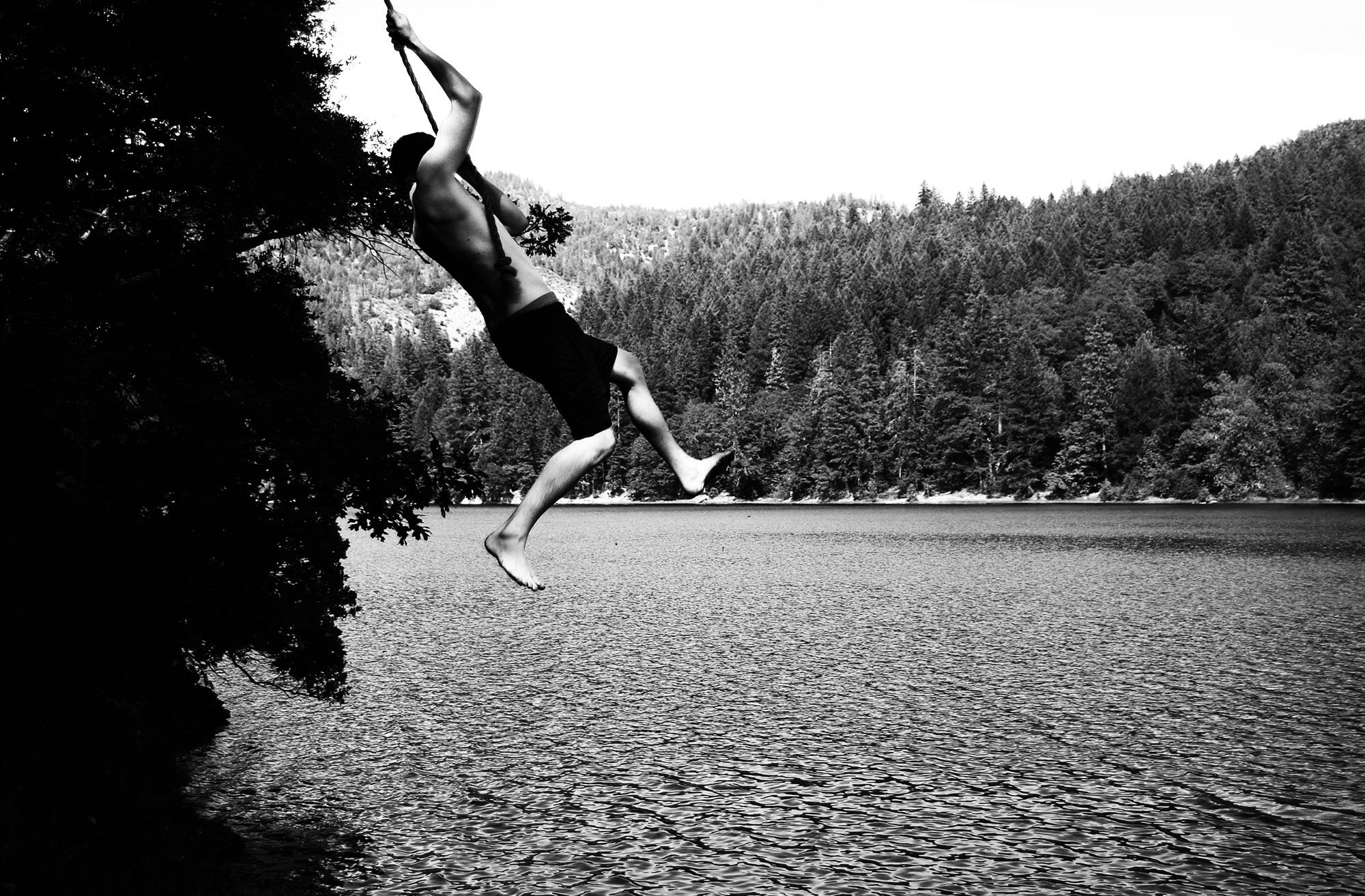The Backcountry Swimming Hole User's Manual

'Bailey Weaver'
Where can I find the best swimming holes?
If you’re looking for an epic summer activity beyond your neighborhood pool, it’s time to hit the trail. Natural swimming holes can be found all across the country.
Understanding your regional geography will help you know just what to look for in the area.
– The Coastal Range is stocked with waterfalls and tidal pools, thanks to tectonic and volcanic activity from millions of years ago. In the nearby Sierra Nevada, glacial activity has carved hundreds of unique and pristine alpine lakes. Look for pools above treeline.
– Geothermal activity makes the Great Basin one of the best regions to find a hot spring. In the Rocky Mountains, annual snowmelt feeds alpine lakes, and dramatic elevation changes mean stunning waterfalls. Grab a topo map and trace a river or creek to where it intersects contour lines on the map. A tightly packed group of u-shaped contour lines intersected by a river may indicate the presence of a waterfall. And oftentimes, a pool can be found at the base.
– Throughout the Great Plains and Midwest, look for water-filled quarries and springs. Although quarries are man-made, they pay tribute to the mining of the region’s past and are often deep enough for ambitious cannonballs. (Use caution, though: Some have old mining equipment in them.
– If an epic natural water slide is what you’re after, the Appalachian region has quite a few. Look along the fall line where the mountain meet the foothills.
What should I bring?
Choose quick-drying, performance fabrics like polyester or nylon. Wear or pack shoes to swim in—submerged rocks and debris can cut unprotected feet.
To avoid chafing on the hike out, consider packing extra clothes and a lightweight, fast-drying towel.
The further you are from human activity, the more fragile the ecosystem. According to ecohydrologist Dr. Georgianne Moore, you should avoid scented lotions, bug sprays or sunscreens.
“Bug repellents contain some of the most harmful chemicals to a fragile water ecosystem,” she says. Consider wearing SPF-rated protective clothing for sun protection instead. If you must wear sunscreen, opt for an eco-friendly or biodegradable brand.
Already wearing the harsher stuff? Move at least 200 feet away from the water source and use biodegradable soap and water to remove it.
How safe are rivers?
On many rivers, an innocuous surface can hide deadly undercurrents. According to Sarah Bulford, a park ranger in British Columbia, rivers are so hard to read, it’s rarely safe to swim across. Instead, look for pools with calmer water upstream of shallow sections.
Uncertain? Go for a float. Find a map and get local advice on easy put-ins and take-outs. Before setting out, check the flow rate online at the USGS Current Water Data website. Any measurement over 800 cubic feet per second is typically too dangerous for your inner tube.
Are alpine lakes fair game?
ost lakes above treeline are glacier-fed, making them pristine, crystal-clear, and extremely cold. Feel free to jump in, but access the water via durable surfaces and make sure you’re sunscreen-free. Ranger Bulford also warns against overdoing the dip: Hypothermia is always a risk. As on any alpine mission, check the weather before you go, and plan to be off the mountain by noon to avoid thunderstorms.
How high can I safely cliff jump?
Because fear-vomiting into a pristine water hole is frowned upon by most, understand your limits.
Regardless of height, scout the landing for safety. Bulford recommends figuring out the water depth, cliff angle, and below-surface topography before jumping. “If you can’t see the bottom of the pool or access the base of the water without jumping, it’s best not to,” she says.
The minimum recommended water depth for cliff jumping is 12 feet. Start with leaps from much shorter heights and work your way up. Leave anything over 30 to 40 feet to the pros.
Station a spotter below to warn other swimmers and alert you to obstacles. Always jump out and away from the cliff. Hit the water feet first, pencil-straight with your arms above your head. Back flips might look cool, but concussions don’t earn you any extra style points.
Unsure? Ask a local. It’s rarely smart to cliff jump into an unfamiliar swimming hole—no matter how much beer’s at stake.
Can I be naked?
Nearly all backcountry swimming holes are unregulated, meaning neither a lifeguard or your Aunt Theresa will be there to wag a finger (or help you if things go wrong). However, skinny-dipping is covered by a city or state’s public indecency laws. Do your research beforehand and use good judgment based on the present crowd and local tradition.
The best time to show your moon is usually at night when there are fewer people around to scandalize, but make sure you’ll be able to warm yourself up post-swim without sun.
How can I keep the good spots good?
Swimming can feel carefree, but if you don’t want your local waterfall looking like your community pool, you’ll need to give it a little extra TLC. Here are a few extra tips from Dr. Moore and longtime NOLS field instructor and Leave No Trace expert Pip Coe:
Make sure your swimming hole is on public land. If not, get permission from owners before accessing.
- Stay on trail.
- Take extra care entering and exiting pools in remote areas to avoid bank destruction and erosion.
- Pack out any trash you bring (or find).
- If wildlife use the pool as a watering hole, do your research and avoid swimming when they’re likely to be around. Animals like deer typically sneak out for a drink at dawn and dusk.
- Be considerate of other users (leave the boom box at home).
- Resist rearranging or stacking rocks.
- Leave the area exactly how you found it.